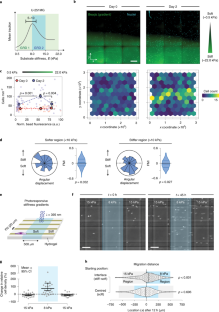2022-07-13 カリフォルニア大学校アーバイン校(UCI)
加齢に伴う脳の炎症の増加は、アルツハイマー病に関連するタウタンパク質や神経細胞のシナプスの完全性に下流から影響を与えることがわかりました。その結果、脳の高速睡眠紡錘体の生成能力が損なわれ、高齢者の加齢に伴う記憶障害の一因となる。
研究者らは、脳の炎症を誘発するミクログリアとアストロサイトという2種類のグリア細胞の活性化が、高速睡眠紡錘体の発現の乱れと関連していることを明らかにした。これらの関係が、βアミロイド斑や神経原線維変化が蓄積していない人にも確認されたことは、睡眠障害と炎症がアルツハイマー病の最も早い警告サインのひとつである可能性を示しています。
<関連情報>
- https://news.uci.edu/2022/07/13/research-reveals-how-brain-inflammation-may-link-alzheimers-risk-sleep-disturbance/
- https://academic.oup.com/sleep/advance-article-abstract/doi/10.1093/sleep/zsac135/6603598
βアミロイド陽性前の睡眠紡錘体と記憶に関連する炎症、タウ病理、シナプスの完全性。 Inflammation, tau pathology, and synaptic integrity associated with sleep spindles and memory prior to β-amyloid positivity
Bryce A Mander, Abhishek Dave, Kitty K Lui, Katherine E Sprecher, Destiny Berisha, Miranda G Chappel-Farley, Ivy Y Chen, Brady A Riedner, Margo Heston, Ivonne Suridjan,Gwendlyn Kollmorgen, Henrik Zetterberg, Kaj Blennow, Cynthia M Carlsson, Ozioma C Okonkwo, Sanjay Asthana, Sterling C Johnson, Barbara B Bendlin, Ruth M Benca
Sleep Published:07 June 2022
DOI:https://doi.org/10.1093/sleep/zsac135

Abstract
Study Objectives
Fast frequency sleep spindles are reduced in aging and Alzheimer’s disease (AD), but the mechanisms and functional relevance of these deficits remain unclear. The study objective was to identify AD biomarkers associated with fast sleep spindle deficits in cognitively unimpaired older adults at risk for AD.
Methods
Fifty-eight cognitively unimpaired, β-amyloid-negative, older adults (mean ± SD; 61.4 ± 6.3 years, 38 female) enriched with parental history of AD (77.6%) and apolipoprotein E (APOE) ε4 positivity (25.9%) completed the study. Cerebrospinal fluid (CSF) biomarkers of central nervous system inflammation, β-amyloid and tau proteins, and neurodegeneration were combined with polysomnography (PSG) using high-density electroencephalography and assessment of overnight memory retention. Parallelized serial mediation models were used to assess indirect effects of age on fast frequency (13 to <16Hz) sleep spindle measures through these AD biomarkers.
Results
Glial activation was associated with prefrontal fast frequency sleep spindle expression deficits. While adjusting for sex, APOE ε4 genotype, apnea–hypopnea index, and time between CSF sampling and sleep study, serial mediation models detected indirect effects of age on fast sleep spindle expression through microglial activation markers and then tau phosphorylation and synaptic degeneration markers. Sleep spindle expression at these electrodes was also associated with overnight memory retention in multiple regression models adjusting for covariates.
Conclusions
These findings point toward microglia dysfunction as associated with tau phosphorylation, synaptic loss, sleep spindle deficits, and memory impairment even prior to β-amyloid positivity, thus offering a promising candidate therapeutic target to arrest cognitive decline associated with aging and AD.


